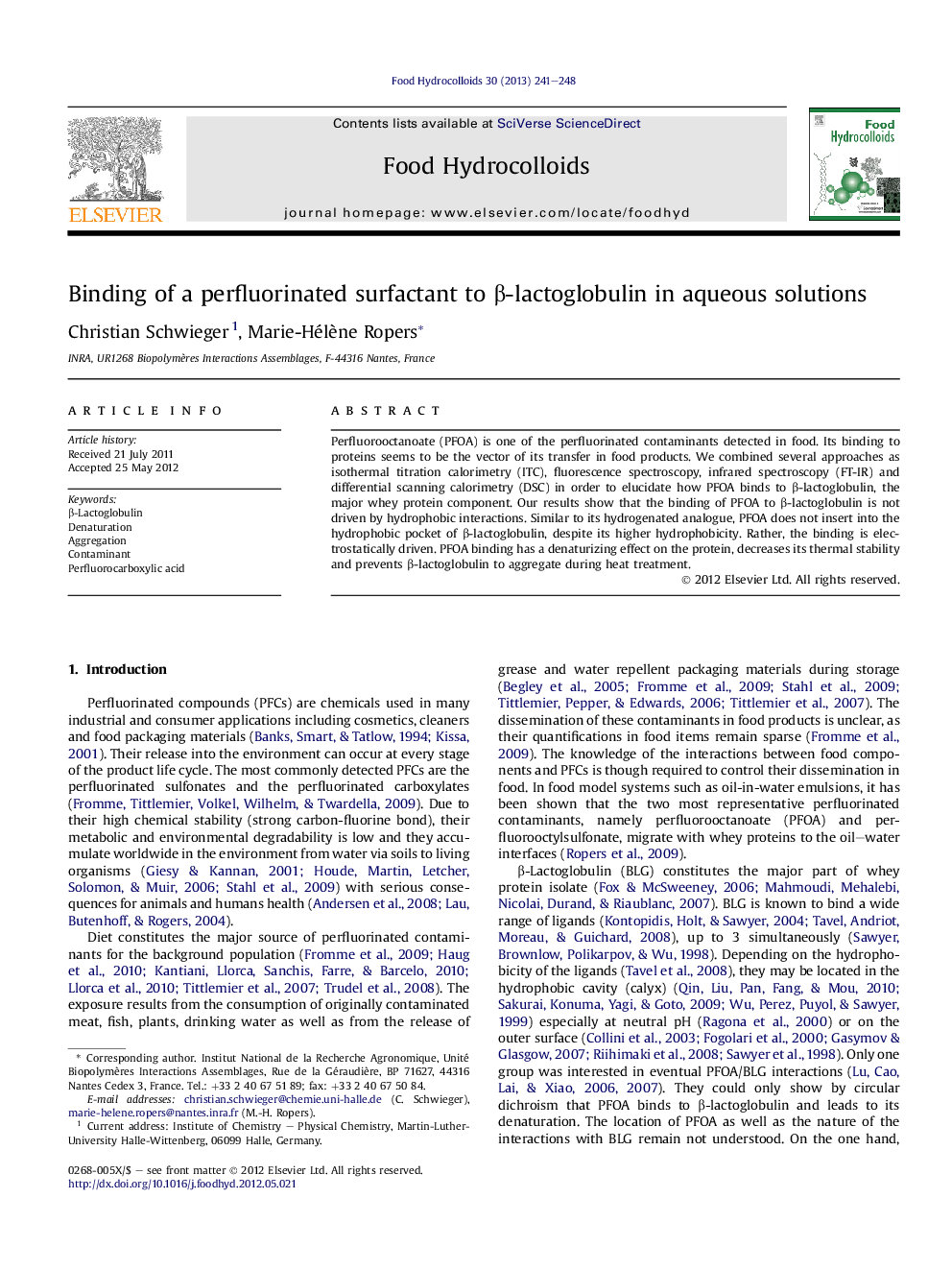| Article ID | Journal | Published Year | Pages | File Type |
|---|---|---|---|---|
| 604746 | Food Hydrocolloids | 2013 | 8 Pages |
Perfluorooctanoate (PFOA) is one of the perfluorinated contaminants detected in food. Its binding to proteins seems to be the vector of its transfer in food products. We combined several approaches as isothermal titration calorimetry (ITC), fluorescence spectroscopy, infrared spectroscopy (FT-IR) and differential scanning calorimetry (DSC) in order to elucidate how PFOA binds to β-lactoglobulin, the major whey protein component. Our results show that the binding of PFOA to β-lactoglobulin is not driven by hydrophobic interactions. Similar to its hydrogenated analogue, PFOA does not insert into the hydrophobic pocket of β-lactoglobulin, despite its higher hydrophobicity. Rather, the binding is electrostatically driven. PFOA binding has a denaturizing effect on the protein, decreases its thermal stability and prevents β-lactoglobulin to aggregate during heat treatment.
Graphical abstractFigure optionsDownload full-size imageDownload as PowerPoint slideHighlights► Perfluorooctanoic acid saturates β-lactoglobulin at a molar ratio of 6. ► The interactions of perfluorooctanoic acid onto β-lactoglobulin are non hydrophobic. ► Perfluorooctanoic acid-bound β-lactoglobulin is partially denaturated. ► Perfluorooctanoic acid prevents the formation of intermolecular β-sheets.
